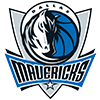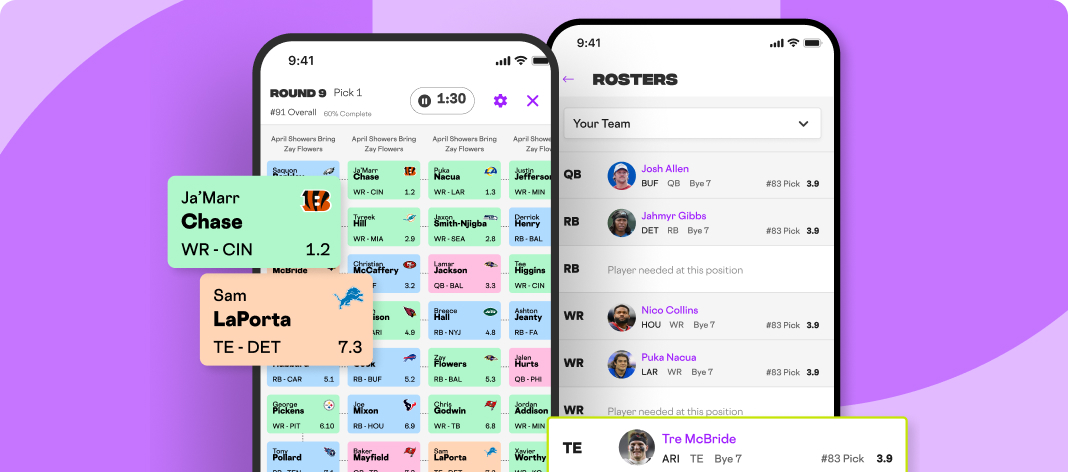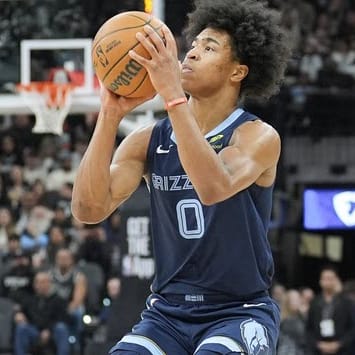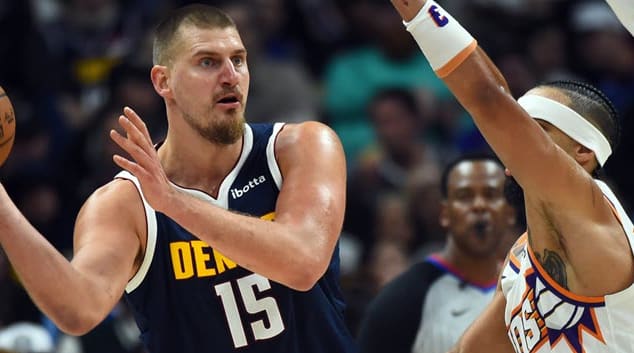Preparing for draft day and creating a strong fantasy basketball cheat sheet is critical for long-term success.
Managers have a variety of tools at their disposal inside RotoWire's fantasy basketball draft kit — the most important being NBA fantasy rankings and NBA projections.
Both tools serve different purposes:
- Projections provide the raw statistical outlook for each player over the course of the season (and even daily for short-term needs).
- Rankings apply context, factoring in injury risk, positional scarcity, and real-world circumstances that influence fantasy value.
The best fantasy basketball managers use both in tandem to build balanced rosters and dominate their NBA fantasy draft.
Key Differences Between Rankings and Projections
- Projections: Purely statistical. They show expected production across categories, offering a clear picture of what numbers a player might put up.
- Rankings: Contextual. They adjust for things like injury history, minutes played, role in NBA lineups and scarcity at certain positions.
For example, relying on projections alone could leave you with a roster that looks strong in scoring but weak in rebounds, steals, or percentages. Rankings give you the perspective needed to avoid those imbalances.
When to Trust Rankings Over Projections
Think of NBA projections as quantitative analysis and rankings as qualitative analysis.
Take Kawhi Leonard, as an example. His per-game projections rank among the league's elite, but because of his durability concerns, his overall rank falls much lower. Relying only on projections could cause you to overvalue him. He's ranked just 76th at RotoWire with lower fantasy basketball auction values because he's projected to play in just 55 games.
In practice, it's smart to:
- Start with rankings for draft-day decision-making.
- Use projections to double-check that your target player's stats fit your team build.
That's also why a player's NBA fantasy ADP may not match their projections — context matters.
How to Combine Rankings and Projections
The smartest approach is to use both side by side during your draft:
- If you see a player with standout projections, cross-check where they fall in your NBA fantasy rankings.
- If someone ranks highly, review their projections to ensure they balance out your roster's statistical needs.
This strategy ensures you're drafting the right player at the right time — not just chasing numbers or blindly following rank order.
Mistakes to Avoid When Mixing Rankings and Projections
- Relying only on rankings: You may end up overloaded at one position or weak in critical categories.
- Relying only on projections: You risk stacking injury-prone players from the NBA injury report or doubling up on teammates who share the same light schedule weeks.
A balanced roster across multiple NBA lineups is the foundation of winning. By combining rankings with projections, you'll avoid one-dimensional builds and maximize value at every stage of your NBA fantasy draft.
Final Word: Use Every Tool in Your RotoWire Draft Kit
Don't get locked into just one tool from your fantasy basketball draft kit. Rankings help with draft-day context, while projections provide the raw stats you'll need to compete week to week.
Together, they ensure you're building a roster that's both versatile and durable. Managers who subscribe to RotoWire gain access to these tools (and more) for a clear edge all season long.










































